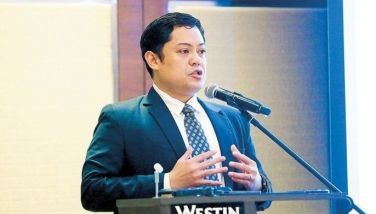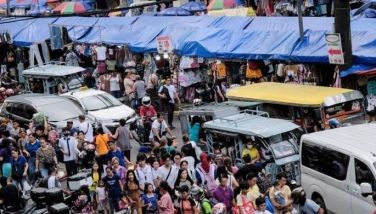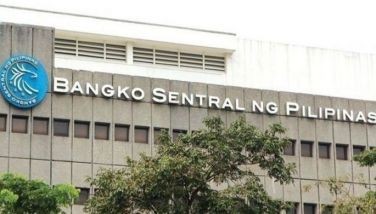Baseload, baseload, baseload

Bloomberg had an article last week that heralded how “The Philippines has leapfrogged its Southeast Asian neighbors to become a regional leader in planned clean-power projects as fewer investment restrictions and green-minded policies attract domestic and foreign cash.
Changes including allowing full foreign ownership of renewable energy projects have already helped secure a pipeline of 99 gigawatts of wind and solar developments.”
Hmmm… Should we be impressed? I am not sure that’s something to justify leaping around with joy. We should be concerned more about having sufficient dependable baseload power sources. Otherwise, more yellow and red alerts. You see… we have such thin reserves in our power grid that depending on undependable variable renewable energy to keep our lights on is skating on thin ice.
What power sources can be used for baseload? Coal, natural gas, geothermal, storage hydro and nuclear. We have geothermal but not that much. They are exploring but the cost of drilling exploratory wells is quite high and the private geothermal companies obviously need government support. There are also new technologies like fracking that may increase our potential geothermal resource base but that also involves expensive drilling.
Storage hydro is our old reliable power source but the changing weather patterns with prolonged El Niño has made it unreliable these days. Notice how Pantabangan and Magat dried up early this year. If there is water, storage hydro is a dependable renewable baseload power source.
Natural gas has also proven to be a good transition fuel. It is not that green. It is also obtained the same way we get oil. In fact, it was once considered a byproduct of oil production and was wastefully flared when the world didn’t realize its value yet.
If we get another Malampaya in the West Philippine Sea, natural gas would be a reliable baseload power source. But big bad China is preventing us from developing the natgas deposits at the Recto bank.
Imports are the most viable option for us now but that means we need proper receiving facilities. First Gas of the Lopezes has worked early to have that. But depending on floating storage for the meantime can be iffy and dangerous given our propensity to have strong typhoons with rough seas.
Natgas importation also subjects us to the same geopolitical uncertainties as oil. Unfortunately for the world, the Middle East is a political powder keg and the narrow Straits of Hormuz can be easily blocked by Iran if it feels the world, specially the West, is not playing fair with them.
We can import from the United States which has developed a sizable natgas resource. They are talking of exporting natgas but there are segments of the American public that want to keep natgas for domestic use only. A Trump victory will probably make the isolationist tendency of the US more pronounced.
Nuclear power provides baseload. But that is out of the question for a country that dumped a ready to operate 620 MW nuclear power plant out of fear of nuclear energy. Some folks are now talking of small modular reactors, which at 300 MW isn’t really that small. But a recent technical report concluded that small modular reactors are still too expensive, too slow and too risky.
Meralco is said to be studying SMRs. But there are zero SMRs in operation or even contracted for construction outside Russia, China and India. We also do not have an appropriate regulatory body for anything nuclear. It takes years to develop a competent one, based on our experience when we prepared for the Bataan nuclear plant some decades ago.
And so, we are just left with coal… dirty bad coal. We don’t have to like coal but we need coal for baseload. Plenty of coal in Indonesia and we can use Asean relationships to assure a steady supply.
The renewables crowd is however insisting there is a solution to the problem of VREs being intermittent and unsuitable for baseload duties. Think storage, they say. VRE power plants can reduce instability by storing off-peak renewable energy in batteries or in compressed air energy storage. It is claimed that these storage technologies result in clean energy generation on-demand and a stable grid.
The thing is, most of the VRE projects coming on line this year do not include the storage component. Having storage also raises the cost of power produced by solar and wind. With our limitations in reliable supply from our ageing coal power plants and El Nino wracked storage dams, VREs can’t be the answer to ease our anxieties now.
The other power storage solution being talked about is compressed air storage: excess clean energy powers an air compressor to store compressed air in an appropriate compressed air system, which can then be deployed on demand to power a turbine.
The system has yet to be commercially tested in an operating power grid.
Those worried about our power supply are not ready to congratulate DOE for making us a regional leader in VREs. The VREs slated to go on line this year must prove their worth. The ultimate test is how the grid reacts to all those VREs in stabilizing operations. Let’s see if we can avoid the yellow and red alerts we have been having. In case DOE doesn’t get it, their responsibility is to assure baseload, baseload and baseload.
Bottomline: we still have all those aging coal power plants that must be rehabilitated or scrapped and a clear plan made to ensure their baseload duties will be taken on by similarly reliable baseload power sources: natgas or new coal. VREs are nice and trendy to have. But who do we blame if our power supply falters while we are happily congratulating each other for making the Philippines the RE leader in the region?
Boo Chanco’s email address is [email protected]. Follow him on X @boochanco
- Latest
- Trending





























